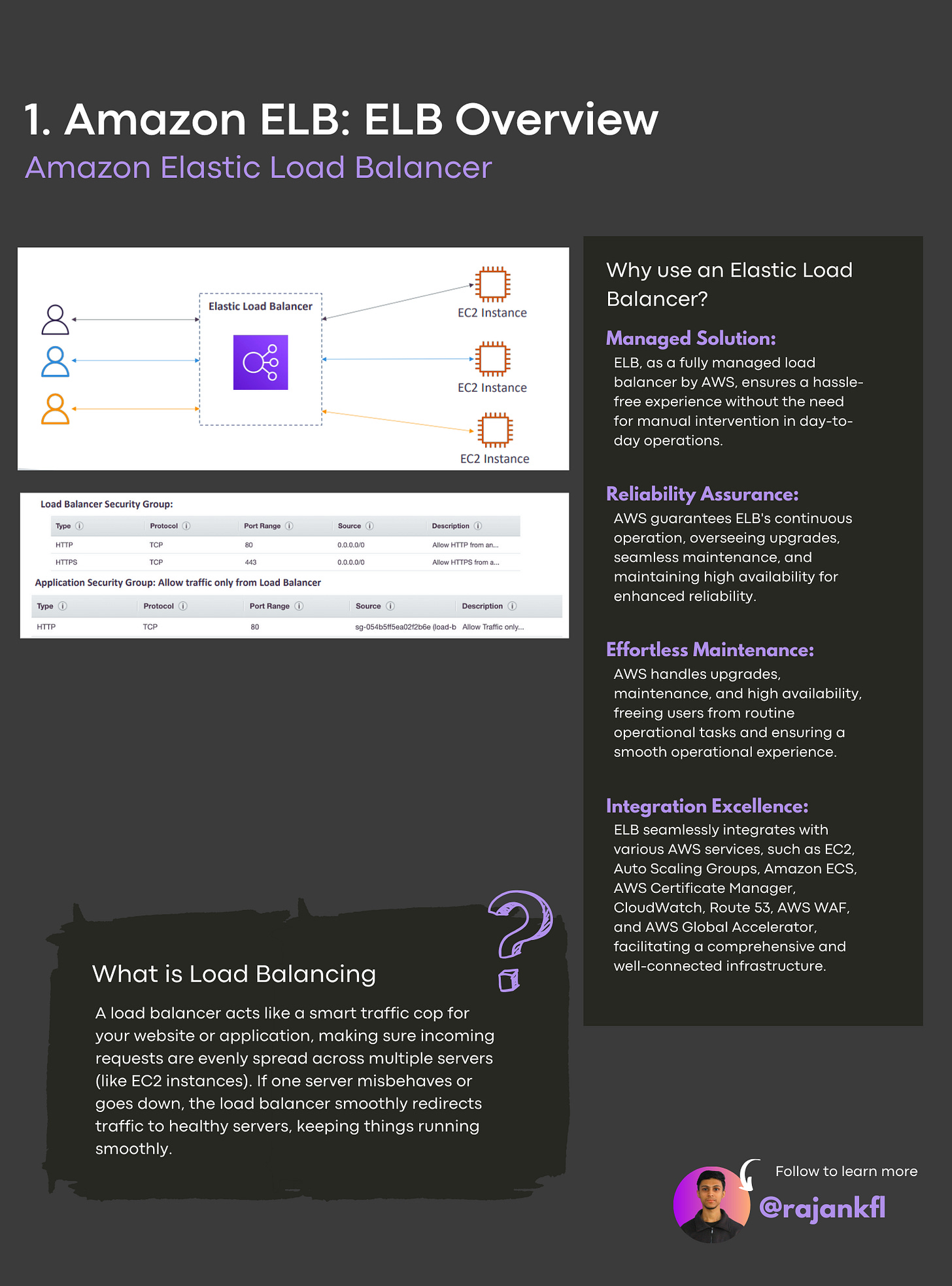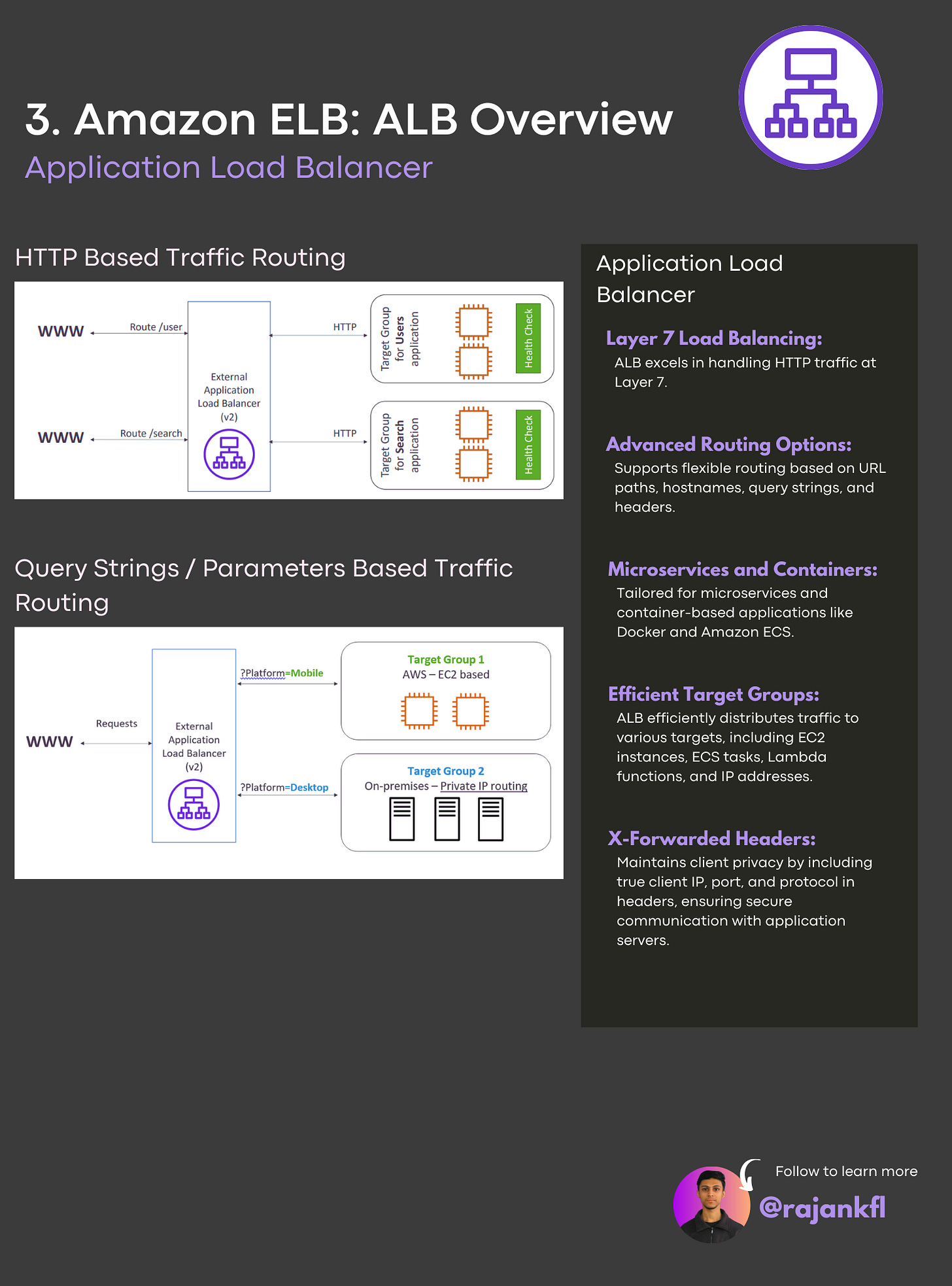In simple terms, AWS Elastic Load Balancing is a traffic cop for your web application on Amazon Web Services. It automatically routes incoming user requests to multiple servers (like EC2 instances) that are running your application. This helps in two ways:
Improves performance: By distributing traffic across servers, Elastic Load Balancing prevents any single server from getting overloaded, which can slow things down for users.
Increases reliability: If one server happens to malfunction, the load balancer keeps sending traffic to the healthy servers, so your application stays up and running for users.
Here's a detailed visual guide to help you grasp the Load-balancing concepts quickly! 👇
In a nutshell, ELB: Distributes traffic across multiple servers in your AWS environment, ensuring smooth performance even during traffic spikes.
ELB may not be the best fit for: Simple applications with minimal traffic.
ELB shines for:
Scalable web applications that need to handle varying traffic loads.
Highly available applications where downtime is critical.
You're now ready to explore ELB further through the AWS Management Console and see how it can benefit your applications!
And if you have any questions, feel free to reach out – I'm here to help you make the most of ELB.
Thanks for Reading till the End!
Stay tuned for the next guide, where we'll delve deeper into another essential AWS service.











